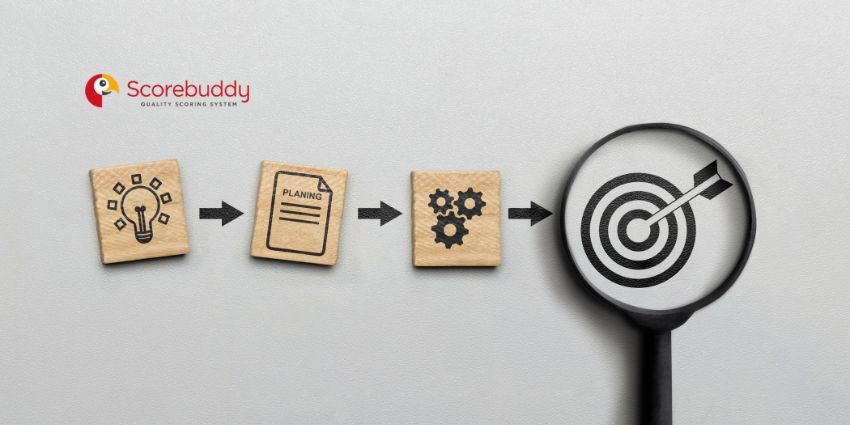Customer service agents are the frontline – your foot soldiers who take the first call (or hit) – when it comes to resolving conflicts and ensuring customer satisfaction. Here are ten effective dispute-resolution techniques that will help you navigate tricky situations without breaking a sweat!
1. Apologize without pointing fingers (even at yourself)
Here’s the thing: apologies are not about landing the blame (internally or externally); they’re about acknowledging the customer’s feelings and taking responsibility for finding a solution.
When apologizing to a customer, avoid using phrases like “I’m sorry if you feel that way” as they can come across as insincere. Instead, take ownership of the problem by saying something like, “I apologize for any inconvenience this has caused you.” By reframing apologies in a non-blaming manner, you demonstrate that resolving their issue is your top priority, regardless of who’s at fault.
2. Avoid reacting to negative words and phrases
By responding defensively when customers express their dissatisfaction, you only escalate the situation further. Instead, take a deep breath and remind yourself that the customer may be upset or frustrated due to a product or service issue, and their negative statements aren’t targeted toward you personally.
Responding with empathy can help defuse tension. So, try not to interrupt or cut off the customer while they are expressing their grievances. Let them finish speaking before offering your response.
3. Reassure customers that you understand them
During dispute resolution, it’s important to reassure customers that you understand their perspective. Use phrases like “I understand how frustrating this situation must be for you” or “I can see why you’re feeling upset about this.” Demonstrate your understanding of their specific issue by summarizing it back to them in your own words.
For example, say something like “If I’m understanding correctly, you’re unhappy with the delay in delivery of your order.” Ask clarifying questions to ensure that you are on the same page regarding the dispute.
4. Practice listening with intent
To practice listening with intent, start by giving your full attention to the customer. Let go of any distractions and focus solely on them. Show that you are engaged in the conversation by saying “Uh-huh” or other verbal cues. As they speak, resist the urge to interrupt or interject your own thoughts.
Don’t just listen for facts; pay attention to emotions as well. Empathy plays a crucial role in dispute resolution, so try to understand how the situation is affecting the customer on an emotional level.
5. Offer concrete actions
This dispute resolution technique provides customers with a sense of control over the situation. For example, if a product is faulty, provide instructions on how to return it for a replacement or refund. Be clear and concise in your communication and break down complex processes into simple, actionable steps. Additionally, make sure you set realistic expectations for any action you propose.
6. Use softener terms
Language softeners can be incredibly helpful in de-escalating disputes. These words and phrases, such as “likely,” “possibly,” “typically,” “sometimes,” “perhaps,” or “occasionally,” allow you to convey information without sounding too definitive or confrontational.
For example, instead of saying, “your package has been delayed” you could say, “it’s likely that your package has been delayed, but you will receive it in less than three days.” By using the word ‘likely’ you soften the blow of bad news in already tense dispute resolution scenarios.
7. Let the customer vent first before you proceed to resolution
Letting the customer express their concerns and emotions can help in dispute resolution and make them feel heard. While they’re expressing their frustration, avoid making excuses or pointing fingers at anyone. Once they’ve finished, offer an apology for any inconvenience caused and assure them that you are committed to finding a resolution.
By allowing customers a space to express themselves – before jumping into problem-solving mode, you create a more positive environment for resolving disputes effectively.
8. Don’t get personal – instead, refer to data, policies, and facts
Provide customers with concrete evidence to support your position. This helps remove any subjective bias from the conversation and keeps the discussion focused on objective information.
For example, if a customer is upset about a refund policy, you can explain how the policy has been applied consistently in previous cases. Additionally, by highlighting other similar instances, you demonstrate that their situation is not unique and reassure them that there are viable solutions available.
9. Compensate the customer
Sometimes, a small gesture can go a long way in restoring trust and goodwill. For example, you could offer them a discount on their next purchase or provide them with benefits like free shipping. Store credits or vouchers can also incentivize customers to continue doing business with your company. In some cases, when an apology isn’t enough, offering refunds is an effective way to resolve disputes.
10. Escalate to a supervisor who is in a position to offer a resolution
Sometimes, despite our best efforts, you encounter situations where you simply don’t have the authority or resources to fully address a customer’s concerns. In such cases, it’s important not to leave the customer hanging. Instead, take the initiative and involve a supervisor who can step in.
Escalating an issue doesn’t mean avoiding responsibility – it means recognizing that certain problems require higher-level decision-making or specialized knowledge that may be beyond your scope as a frontline agent.
By following these dispute resolution techniques and knowing when it’s appropriate to escalate matters further up within your organizational chain of command, agents will be well-equipped to handle even the most challenging customer interactions.







